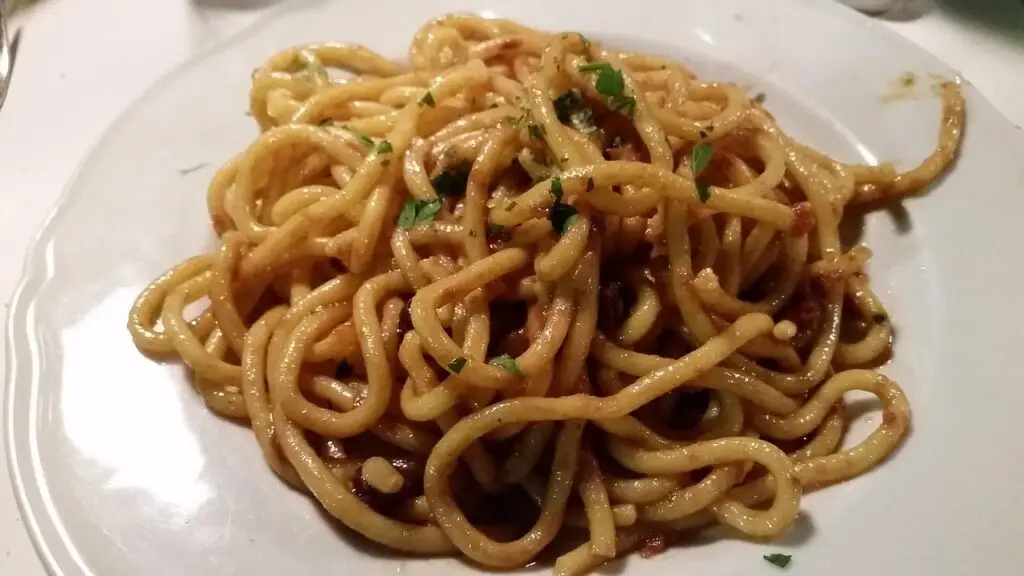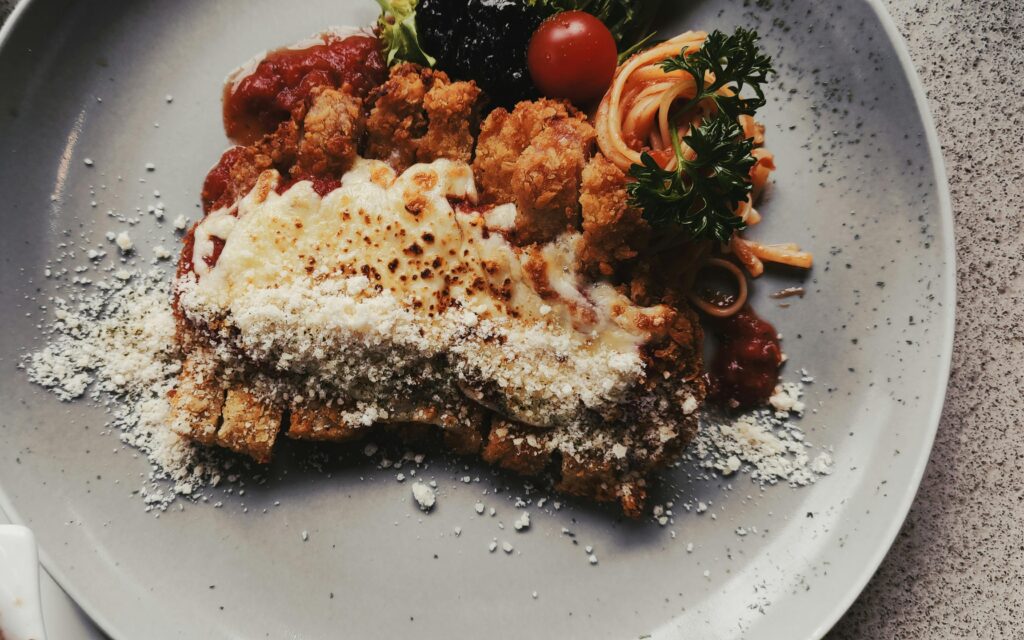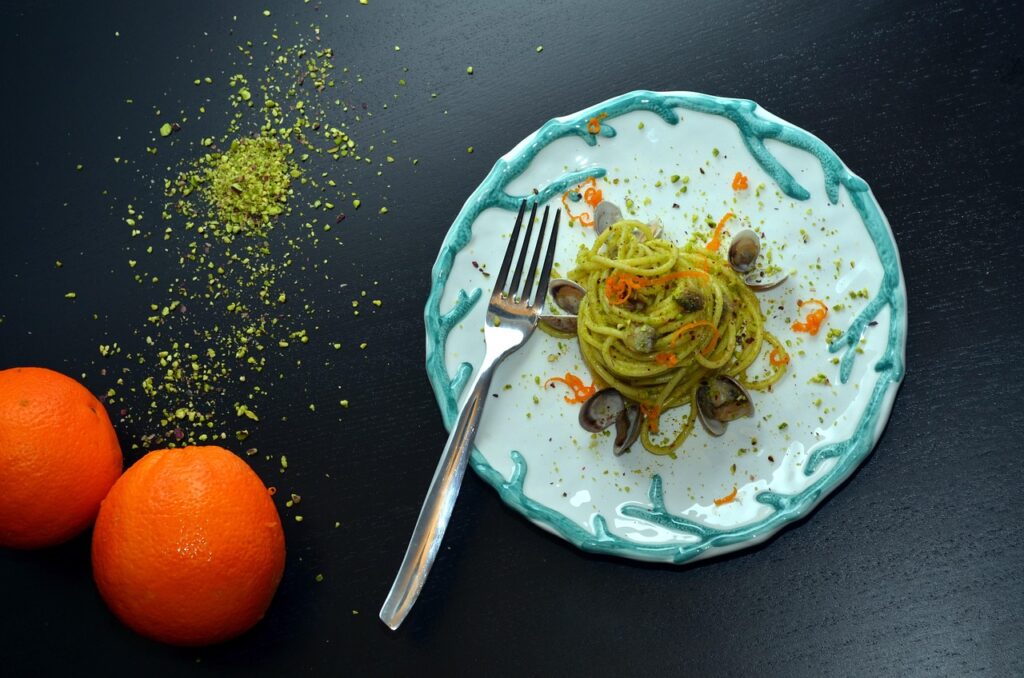Bigoli: 7 Irresistible Reasons to Love Veneto’s Thick Pasta
Bigoli is a long, thick, rough-surfaced pasta from the Veneto region. It isn’t delicate. It demands rich sauces, slow cooking, and respect.
What is Bigoli?
Bigoli is a long, thick strand of pasta with a coarse texture, native to Veneto. Made for sauces that cling, it’s more substantial than spaghetti and more rustic. Bigoli often appears in whole-wheat or mixed flour form, sometimes enriched with eggs.
This pasta isn’t about elegance. It’s about satisfying heft and flavor. The rough surface grabs oily, rich, or meaty sauces in a way smoother pasta can’t.

History of Bigoli
Bigoli has roots in Venetian-era tradition. Stories point to the early 1600s when Bartolomio Veronese (nicknamed “Abbondanza”) patented a press (the bigolaro) in Padua to extrude thick pasta strands. :contentReference[oaicite:1]{index=1}
Earlier mentions suggest that forms of this pasta existed even centuries ago, particularly in northeastern Italy, where flour shortages led cooks to mix flours and press doughs into larger strands. :contentReference[oaicite:2]{index=2}
Ingredients & Texture
Original Bigoli dough is simple: soft wheat flour (sometimes whole-wheat or buckwheat), water, and salt. Eggs weren’t always part of the mix, though some regional recipes include them. :contentReference[oaicite:3]{index=3}
The defining feature is texture. Bigoli is extruded through bronze or wooden dies via a bigolaro. That gives a rough and porous outer layer. The thick strand (≈ 3-4 mm diameter) and rustic shape make Bigoli ideal for sauces that cling and for bold flavors. :contentReference[oaicite:4]{index=4}
How Bigoli Is Made
The bigolaro is a large press, originally hand-operated, that forces the dough through coarse dies. The result is a noodle with heft and “bite.” In many homes, Bigoli are still made using such presses. :contentReference[oaicite:5]{index=5}
After extrusion, traditional Bigoli may be hung or laid over wooden rods to dry slightly; dried artisan Bigoli tries to mimic texture via bronze dies and slow drying. Fresh Bigoli cooks faster; dried takes a bit more time. :contentReference[oaicite:6]{index=6}
Classic Pairings & Sauces
Bigoli in Salsa (Onions & Anchovies)
This is among the most iconic: onions slowly cooked until sweet, anchovies (or salted sardines) dissolved into the oil, sometimes breadcrumbs: simple ingredients, bold flavor. In Venice, this is often eaten during lean days, including Christmas Eve, Ash Wednesday, and Good Friday. :contentReference[oaicite:7]{index=7}
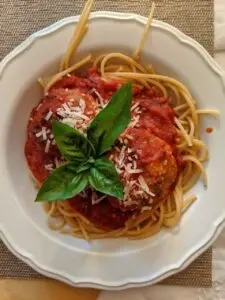
Bigoli con l’Anatra (Duck Ragù)
Rich duck ragù is another canonical pairing. The fatty, deeply flavored sauce complements Bigoli’s weight and chew. You’ll find it in Vicenza and around Padua, especially in autumn festivals. :contentReference[oaicite:8]{index=8}
Sardines, Fish & Oily Seafood
Where fresh sardines or anchovies are readily available, Bigoli with sardelle or fish-based sauces shine. Garlic, olive oil, lemon, or herbs highlight the pasta’s texture.
Other Meat & Vegetable Combinations
Mushrooms, butter, seasonal greens, or sausage ragùs are natural fits. Bigoli handles bold matches: game, offal, or rich meat stocks all pair well. Home cooks often adapt according to what’s local.
Recipes Worth Trying
Classic Bigoli in Salsa (Venetian Style)
- Slice 2 large white onions thinly. Sweat in olive oil over low-medium heat until golden and sweet (≈ 30 min).
- Add 4-5 anchovy fillets (or salted sardines), break them into the onion until they melt. Add a splash of white wine or water to loosen the mixture.
- Cook 400 g Bigoli in well-salted boiling water until al dente. Save some pasta water.
- Drain Bigoli and toss in the pan with the sauce over gentle heat for 1 min, adding pasta water to bind. Finish with parsley and toasted breadcrumbs if desired.
This highlights Bigoli’s texture and flavor — simple, honest, deeply satisfying.
Bigoli with Duck Ragù (Bigoli con l’Anatra)
- Braise diced onion, carrot, and celery until soft. Add diced duck and brown well.
- Add red wine, reduce; then add broth and simmer until tender.
- Cook Bigoli until al dente. Drain, toss into ragù to absorb flavor.
- Serve with optional grated hard cheese (Parmesan or Grana) and finish with a drizzle of good oil.

Quick Weeknight Bigoli with Mushrooms & Lemon Gremolata
- Sauté garlic, shallots, and mushrooms until browned.
- Add a splash of white wine, reduce the heat, and add butter and lemon zest.
- Cook Bigoli; drain; toss with sauce; finish with parsley gremolata (parsley + lemon + garlic) and reserved pasta water.
This keeps Bigoli’s character while cutting down time and fuss.
Buying, Cooking & Storage
Buying Tips
Seek out fresh Bigoli at Italian delis or artisanal pasta makers. For dried Bigoli, look for bronze-cut and whole-grain labeling. Check diameter: around 3-4 mm is traditional. :contentReference[oaicite:11]{index=11}
Cooking Tips
- Use plentiful water and salt. Bigoli needs room to cook evenly.
- Fresh Bigoli: cook briefly (taste often). Dried artisan Bigoli: allow more time, but avoid overcooking.
- Finish the sauce and pasta together in the pan for a minute or two, using reserved pasta water to bind the sauce to the noodles.
Storage
Fresh Bigoli: use within 1-2 days or freeze. Dried: store in a cool, dry space. Once opened, use an airtight container. Moisture ruins the texture quickly.

Variations Across Regions
While Veneto is Bigoli’s home, nearby areas adopt their own twists. Some use whole-grain flour (“Bigoli mori”), buckwheat, or add duck or hen eggs. Lengths and shapes stay similar. In Padua, Vicenza, and Treviso, you’ll find subtle differences in sauce style. :contentReference[oaicite:12]{index=12}
Why Keep Bigoli in Your Pantry
Bigoli is hearty, forgiving, and nutritional. It turns simple ingredients into something memorable. If you want meals with texture, Bigoli delivers. It makes pantry staples feel special and elevates humble sauces. Once you taste the chew and weight, you’ll see why it endures.
FAQs
How do you pronounce Bigoli?
Native Venetian pronunciation is “BEE-go-lee” (with stress on the second syllable). Some English speakers say “bee-GO-lee.”
Can I substitute Bigoli?
Yes. Good substitutes include especially thick whole-wheat spaghetti or Pici. They’ll approximate the chew and sauce-holding, but lose some rustic roughness.
Is Bigoli whole-grain?
Traditional Bigoli often uses whole-grain, buckwheat, or mixed flours. Commercial dried Bigoli may use semolina or refined flour. Always check the ingredient list.
Long, thick pasta strands in Venetian cuisine?
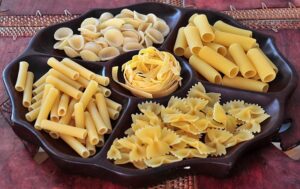
Where can I find authentic Bigoli?
Look at Italian specialty stores, farmers’ markets, and online artisan pasta sellers. In Veneto, you’ll find them fresh in delis and trattorias. Labels with bronze dies, whole-grain flours, or buckwheat versions are good indicators.
